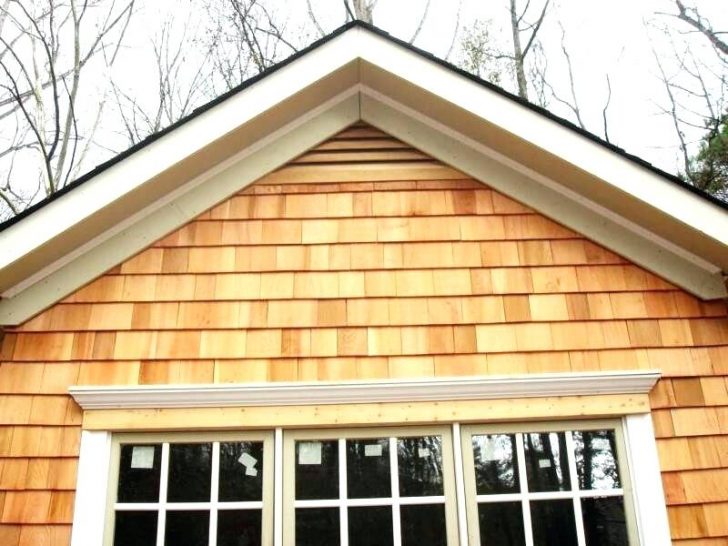
How To Choose Wood Shingles For Exterior Siding
Wood shingles exude a timeless and natural charm that’s difficult to replicate with other siding options. Their rich textures, warm tones, and subtle variations add a distinct personality to any home’s exterior.
If you’re looking for a way to create a classic and inviting look, choosing wood shingles might be the perfect solution. However, selecting the right type of wood shingle can be a bit overwhelming.
Here’s a guide to help you navigate the world of wood shingles and make the best decision for your home.
Understanding the Basics
Wood shingles and shakes are both terms used for wood siding, but there’s a subtle distinction. Shingles are thin, tapered pieces of wood that are usually machine-sawn on both sides for a smoother finish. Shakes, on the other hand, are thicker and hand-split on one or both sides, creating a more rustic and textured appearance. Both shingles and shakes provide excellent siding options, with the choice often coming down to your desired aesthetic.
Choosing the Right Wood Species
The type of wood you choose for your shingles plays a crucial role in their lifespan, durability, and appearance. Here are some of the most popular options:
- Cedar: Western red cedar is renowned for its natural resistance to decay, insects, and moisture. It’s a classic choice for wood shingles, weathering to a beautiful silvery-gray color over time.
- Redwood: Redwood boasts a warm, rich color and offers excellent durability. Like cedar, redwood is naturally resistant to rot and decay.
- Pine: Pine is a more affordable option but will generally require more maintenance than cedar or redwood. It can be pressure-treated with preservatives to enhance its durability.
- Wallaba: Wallaba is a tropical hardwood gaining popularity due to its exceptional durability and resistance to rot, insects, and fire. It’s also known for minimal weathering, retaining its reddish-brown color for an extended time.
Grade Considerations
Wood shingles come in various grades, which indicate their quality. Premium grades have fewer knots and imperfections, while lower grades may have more defects. The grade you choose will depend on your desired aesthetic and budget. Consider that premium grades are generally more visually appealing and may last longer, while lower grades can be a more budget-friendly option if you don’t mind the additional character.
Finishes and Treatments
You have the option of leaving your wood shingles unfinished to weather naturally or applying a stain or paint. While finishes provide color variety and UV protection, they require maintenance over time. If you opt for an unfinished look, choose a durable wood species that can better withstand the elements. Additionally, some pressure-treated wood options come with pre-applied stains or preservatives.
Installation Considerations
Proper installation is essential to ensure the longevity and performance of your wood shingles. Here are some factors to consider:
- Underlayment: A quality underlayment acts as a secondary barrier against moisture, protecting your home’s sheathing. Choose an underlayment specifically designed for shingles, offering features like breathability for optimal performance.
- Spacing: Adequate spacing between shingles is important to allow for expansion and contraction and proper water drainage. Follow recommended spacing guidelines for your specific shingle type, and ensure consistency across the entire installation for a neat appearance.
- Fasteners: Stainless steel or hot-dipped galvanized fasteners are recommended for their rust resistance. Ensure they are the correct length to penetrate the sheathing properly for a secure hold, preventing shingles from loosening in harsh weather conditions.
- Ventilation: Sufficient ventilation behind the shingles is crucial for preventing moisture buildup and promoting long-term durability. Consider ridge vents or strategically placed gable vents to facilitate proper airflow.
Maintenance
Maintaining your wood shingles will help them last for many years. Here are some maintenance tips:
- Regular Inspections: Check your shingles annually for signs of damage, loose fasteners, excessive moss growth, or indications of warping or cupping. Addressing issues early prevents minor problems from turning into major repairs.
- Cleaning: Clean debris and leaves from your shingles regularly to prevent moisture retention. A light pressure wash may be needed occasionally, but take care to use appropriate pressure settings that won’t damage the wood.
- Refinishing: If you initially stained or painted your shingles, you’ll need to refinish them periodically based on the product used and your specific climate conditions. Pay attention to areas with greater sun exposure, as these may require more frequent refinishing.
- Repairs: Address any broken, cracked, or damaged shingles promptly to prevent further damage and moisture infiltration. Consider keeping a small supply of matching shingles on hand for efficient repairs.
Environmental Considerations
Wood shingles can be a good choice for those interested in sustainable building materials. Wood is a renewable resource, and when responsibly sourced, it can have a lower environmental impact than some other siding options. Look for wood shingles that are certified by organizations like the Forest Stewardship Council (FSC), ensuring they come from sustainably managed forests. Additionally, the long lifespan of wood shingles can contribute to reducing material waste over time.
Cost
Wood shingles tend to be more expensive than vinyl or fiber cement siding. However, their longevity, natural beauty, and potential to increase home value can make them a worthwhile investment. Costs vary depending on the type of wood you choose, installation complexity, and geographic location. Be sure to get quotes from several reputable contractors to compare pricing.
Conclusion
Choosing wood shingles for your exterior siding adds a timeless elegance and unique character to your home. With proper selection, installation, and maintenance, this natural and beautiful material can provide decades of enjoyment and protection. If you’re considering wood shingles, carefully weigh the cost, aesthetic benefits, and maintenance needs to determine if it’s the right choice for your home.
If you’re looking for a reliable source for high-quality wood shingles, consider trying Longhouse Cedar. We provide a wide selection of cedar products ideal for renovation and construction projects.
